
The PZL P.7 was a Polish gull wing monoplane fighter aircraft designed in the early 1930s at the PZL factory in Warsaw. It was the main fighter of the Polish Air Force between 1933 and 1935. The PZL P.7 was replaced in Polish service by its follow-up design, the PZL P.11c. More than 30 PZL P.7 fighters remained in service during the Invasion of Poland, scoring several kills despite its obsolescence.

The Savoia-Marchetti S.73 was an Italian three-engine airliner that flew in the 1930s and early 1940s. The aircraft entered service in March 1935 with a production run of 48 aircraft. Four were exported to Belgium for SABENA, while seven others were produced by SABCA. The main customer was the Italian airline Ala Littoria.
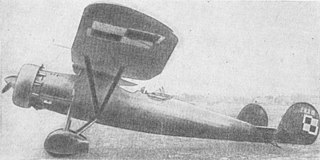
The PWS-19 was a Polish reconnaissance and bomber plane prototype of the 1930s, constructed in the PWS.
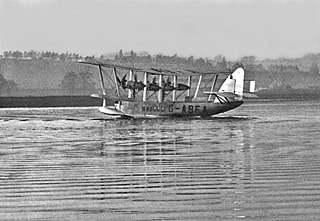
The Short S.17 Kent was a British four-engined 15-seat biplane luxury flying boat airliner, designed and built by Shorts to meet a requirement from Imperial Airways for an aircraft with greater range than the Short Calcutta. The new aircraft was to have sufficient range to fly the stage from Mirabella, Crete, to Alexandria in Egypt without the need for refuelling stops in Italian colonial territory due to a political row which had led the Italian Government to ban British aircraft from its ports.

The PZL P.6 was a Polish fighter, designed by the engineer Zygmunt Puławski, manufactured by PZL state-owned factory. It remained a prototype.

The PZL P.1 was a Polish fighter, designed by the engineer Zygmunt Puławski, manufactured by the PZL state-owned factory. It remained a prototype, but it was the first of the Polish PZL gull wing fighter series, leading to the PZL P.7, PZL P.11 and PZL P.24.

The PWS-20 was a Polish single-engine high-wing 8 passenger airliner, built in the PWS factory and when it made its first flight in 1929 it became the first Polish-designed transport aircraft to fly.
The Lublin R-XII was the Polish three-seat sports and touring aircraft, designed in 1930 in the Plage i Laśkiewicz factory in Lublin, that remained a prototype.
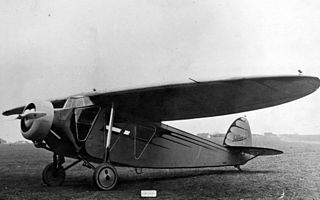
The Lublin R-XI was the Polish passenger plane for 4 passengers, designed in 1930 in the Plage i Laśkiewicz factory in Lublin, that remained a prototype.

The Westland Wizard was Westland Aircraft's first attempt to produce a monoplane fighter. The project was privately funded and the prototype design was done in the spare time of the company's engineers. This all happened during 1926, with high-speed performance as the primary goal.

The Westland Witch was an unsuccessful British bomber prototype, first flown in 1928. Only a single aircraft of this type was built.
The Short S.6 Sturgeon was a prototype single-engined biplane naval reconnaissance aircraft, built to an Air Ministry specification but mostly intended as a demonstrator of the corrosion resistance of duralumin aircraft structures. Two were made.

The Dyle et Bacalan DB-10 was a heavy night bomber, designed in France and flown in 1926. It was a twin engine, high wing, metal frame monoplane, distinguished by a very thick centre section wing which formed the forward fuselage and housed the engines.

The Zeppelin-Lindau Rs.III was a large four-engined monoplane flying boat designed by Claudius Dornier and built during 1917 on the German side of Lake Constance at the Zeppelin-Lindau works.

The Dyle and Bacalan DB-20 was a heavily armoured, all-metal, French ground attack aircraft built in the late 1920s.
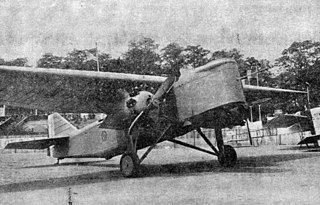
The Wibault 220 or Wibault R.N.3 220 was a twin-engined French night reconnaissance aircraft. Two were built in 1930 to a government contract.

The Dornier Do S was a 22-passenger flying boat airliner flown in Germany in 1930.

The SABCA Demonty-Poncelet monoplane, Demonty-Poncelet limousine or SABCA-DP was a Belgian light aircraft first flown in 1924. It had two comfortable side-by side seats in a glazed cabin. Though it had competition successes in 1924 and 1925, it did not go into production.
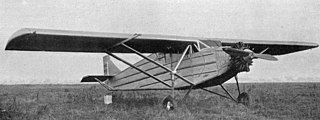
The Aviaméta 92 was a French, all-metal, five seat monoplane built in the late 1920s. Three different engines were fitted, and one example flew the first non-stop Paris-Algiers flight in preparation for an abandoned trans-Atlantic attempt.

The SPCA 10 or SPCA Paulhan-Pillard E.5 was a large, all-metal, French reconnaissance and bomber flying boat flown in 1928. Only one was built, and it was lost in a fatal crash during development.



















